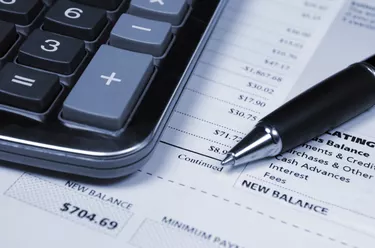
Total debt refers to the total amount of interest-bearing debt a company holds. There are many classes of debt, ranging from mortgages held on various properties to lines of credit. There are also items treated as debt for accounting purposes, such as capitalized leases, which are leases whose terms more closely resemble a transfer of ownership than an operating lease. To find total debt on the balance sheet, you will have to sum several accounts rather than find a single account. You will have greater ease finding the total debt balance when you are working with more refined financial statements. Notes to financial statements are particularly helpful in identifying debt instruments.
Identifying Debt
Video of the Day
Debt items will almost always appear solely in the liabilities section of the balance sheet. Short-term debt items are reported as part of current liabilities, while long-term debt is typically reported under other liabilities, or are broken out separately in its own section. Line items described as "payable," excluding accounts or trade payables, are usually interest-bearing debt items. They often consist of financial instruments such as mortgage notes payable, lines of credit, or installment notes, or have the words "notes" or "debt" in the line item. If the financial statements are audited, the notes to the financial statements should contain a footnote identifying all debt items.
Video of the Day
General Ledger
If you have access to the company's general ledger, you can search for debt items associated with listed interest expenses. Notes payable to individuals, such as a company's founder, sometimes appear on the balance sheet as only the individual's name. In this case, if you have access to management, you can confirm the status of these line items. To obtain total debt on the balance sheet, calculate the sum of all debt items you have identified